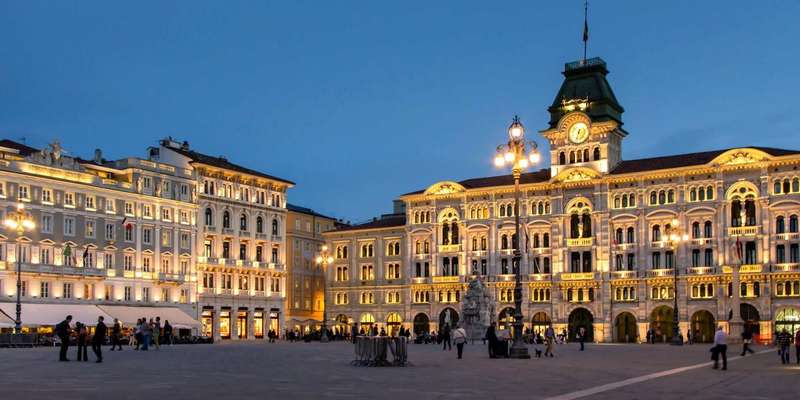- Home
- Useful Tips
- Trieste's historical sites
Trieste's layered history spanning Roman amphitheaters, Habsburg coffeehouses, and WWII memorials often overwhelms visitors. Nearly 60% of day-trippers from Venice miss the city's most poignant sites, according to regional tourism data, leaving them with a fragmented understanding of this cultural crossroads. The challenge lies not in finding historical attractions, but in connecting them meaningfully while avoiding the midday cruise-ship crowds that dominate Piazza Unità d'Italia. Without local context, you risk seeing monuments as isolated curiosities rather than pieces of Trieste's complex identity as a port city that shifted between empires. The frustration mounts when you realize those hurried guidebook stops barely scratch the surface of where Slovenian, Italian, and Austro-Hungarian influences visibly intertwine in the architecture.


Decoding Trieste's architectural timeline without a guidebook
The city's skyline tells its political history in stone, but only if you know where to look. Start at the Roman Theatre near Piazza Barbacan, where 1st-century limestone seats face modern apartment blocks – a stark contrast highlighting Trieste's ancient roots. Walk toward the Canal Grande to spot the Serbian Orthodox Church's Byzantine domes, then notice how neoclassical palaces along Via Torino subtly incorporate Slavic decorative motifs. This route reveals what most miss: the seamless blending of cultural influences. For Habsburg-era grandeur, the Viennese-style cafes along Via San Nicolò showcase Trieste's 18th-century coffee trade importance. Local historians recommend visiting these sites before 10am when the light perfectly illuminates architectural details and tourist numbers are lowest. Keep an eye out for bilingual Italian-Slovenian plaques that explain dual heritage narratives.
Secret wartime histories beyond the Risiera di San Sabba
While the infamous Nazi concentration camp draws justified attention, few visitors explore Trieste's lesser-known WWII sites that locals consider equally significant. The Jewish Quarter's narrow alleys hide poignant memorials like the hidden synagogue on Via San Francesco, accessible only by appointment. Nearby, the Museo Postale documents how partisans used mail routes to resist occupation. For a tangible connection to the Cold War, take tram line 2 to Opicina where Tito's troops once faced Allied forces – the hilltop views alone justify the ride. These sites require more effort to visit than main attractions but offer profound insights. Community-led walking tours occasionally include these stops, or you can follow self-guided routes from the Civic Museums' free pamphlets available at tourist offices.
Habsburg-era splendor on a budget: Miramare Castle alternatives
Miramare Castle's 8€ admission and long queues deter many, but Trieste offers equally impressive Habsburg sites without the crowds. The Revoltella Museum provides free entry on first Sundays, showcasing lavish 19th-century interiors alongside modern art. For maritime history, the Maritime Museum in Campo Marzio features original Archduke Ferdinand Maximilian memorabilia at half Miramare's price. Smart visitors combine these with the opulent Stock Exchange Palace (free during business hours) to create their own imperial itinerary. Late afternoons bring magical lighting to these venues when most tour groups have departed. Local tip: the castle gardens remain freely accessible and offer superior sunset views over the actual palace terraces.
Local-approved strategies for hassle-free monument visits
Trieste's municipal FVG Card (22€ for 48 hours) becomes cost-effective if visiting three paid sites, including special exhibitions. But savvy travelers first check the Civic Museums' combined ticket (15€) covering seven locations with no expiration. For Roman history enthusiasts, the hidden Tergeste Underground tour beneath Piazza della Borsa provides rare access to ancient cisterns – bookings open monthly. To experience Trieste's literary heritage, time your visit to coincide with Joyce School walking seminars (free every second Saturday). Locals always recommend midweek visits to castles and museums when Venetian day-trippers are fewer. Should you opt for guided experiences, prioritize small-group operators focusing on specific eras rather than generic city overviews for deeper historical context.



